HDFC Bank becomes first bank to cross Rs 7 lakh crore market cap
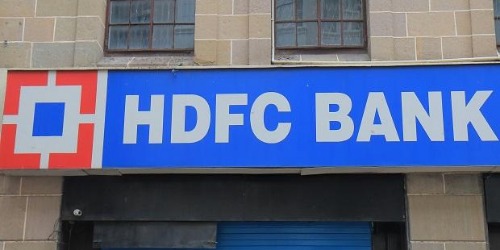
HDFC Bank, the country's largest private sector lender, has joined the Rs 7 lakh crore market capitalisation (M-cap) league, making it only the third Indian company to do so after Mukesh Ambani's Reliance Industries and Tata Consultancy Services. It is the first bank to achieve the feat.
The market capitalisation of HDFC Bank touched Rs 7,01,730.21 (7.01 lakh crore) for the first time ever, after shares of the private sector lender surged near its 52-week high on Thursday. Only Reliance Industries (RIL) and TCS have achieved this milestone. With market capitalisation of Rs 9.38 lakh crore, RIL is the most-valued company, followed by TCS with at Rs 8.28 lakh crore.
HDFC Bank shares were trading near its 52-week high of Rs 1,285, up 0.7 per cent at Rs 1283.40 apiece on the Bombay Stock Exchange. The bank's stock opened higher at Rs 1,283 against previous close level of Rs 1,273.70. The stock touched its 52-week high of Rs 1,285 on September 23 this year and its 52-week low of Rs 979.23 on November 15, 2018.
In a similar trend, stocks of HDFC Bank were at Rs 1,281.75, up 0.62 per cent on the National Stock Exchange.
As per data available with the exchange, as much as 1.53 lakh shares changed hands over the counter as compared to two-week average volume of 2.04 lakh shares on the BSE.
HDFC Bank reported 26.8 per cent rise in net profit at Rs 6,345 crore in September quarter as compared to Rs 5,005.73 crore in the corresponding quarter last year. The lender's net interest income grew 14.89 per cent YoY to Rs 13,515 crore , while other income stood at Rs 5,588.7 crore, up 39.2 per cent on the yearly basis.
On the asset front, the bank's absolute value of bad loans jumped 6 per cent to Rs 12,508 crore. Gross non-performing assets ratio was at 1.38 per cent in Q2FY20 compared to 1.4 per cent in the previous quarter.
Meanwhile, the BSE Sensex was trading at 40,500, up by 213.96 points or 0.53 per cent, and the NSE Nifty was at 11,931.3, up 0.5 per cent.
- 0
- Leave a comment
Moody's Cuts India's GDP Growth Forecast To 5.6% For 2019-20
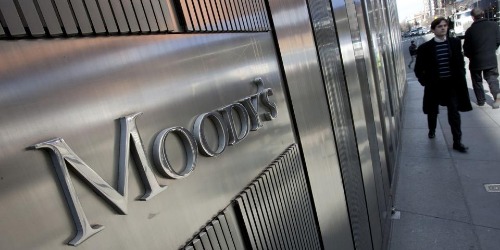
Moody's Investors Service on Thursday lowered its economic growth forecast for India to 5.6 per cent in the current financial year, saying GDP slowdown in the country is lasting longer than previously expected. The cut in growth forecast comes a week after the credit ratings major changed its outlook on India's ratings to "negative" from "stable". India's economy expanded at 5 per cent in the first quarter of financial year, which marked the slowest pace of growth in more than six years.
Here are 10 things to know:
1. "We have revised down our growth forecast for India. We now forecast slower real GDP growth of 5.6 per cent in 2019, from 7.4 per cent in 2018," Moody's said on Thursday.
2. Moody's expects economic activity in the country to pick up to 6.6 per cent in 2020 and 6.7 per cent in 2021, but remain lower than in the recent past.
3. The cut in GDP growth projection follows a series of downgrades and warnings by economists amid concerns of a prolonged slowdown. Many economists have lowered their growth projections for the economy due to weak consumption and thousands of estimated job losses.
4. "India's economic growth has decelerated since mid-2018, with real GDP growth slipping from nearly 8 per cent to 5 per cent in the second quarter of 2019 and joblessness rising."
5. The latest cut marks at least the third straight downward revision by Moody's in its growth projections for the Indian economy.
6. "Investment activity was muted well before that, but the economy was buoyed by strong consumption demand. What is troubling about the current slowdown is that consumption demand has cooled notably," Moody's said.
7. The government has undertaken a number of measures to arrest the growth slowdown. In September, it announced a cut in the corporate tax rate to 22 per cent from 30 per cent. It also lowered the tax rate for new manufacturing companies to 15 per cent to attract new foreign direct investments.
8. The government's other initiatives include bank recapitalization, the mergers of 10 public sector banks into four, support for the auto sector, plans for infrastructure spending, as well as tax benefits for startups.
9. Moody's had in October lowered its growth forecast for India to 5.8 per cent from 6.2 per cent and said a weaker growth outlook will dampen the prospects for fiscal consolidation.
10. In the same month, the International Monetary Fund (IMF) also lowered India's GDP growth forecast to 6.1 per cent in 2019 and 7 per cent in 2020. It however said the country still retains its rank as the world's fastest-growing major economy, tying with China.
SBI cuts India's GDP growth forecast to 4.2% for Q2, 5% for FY20
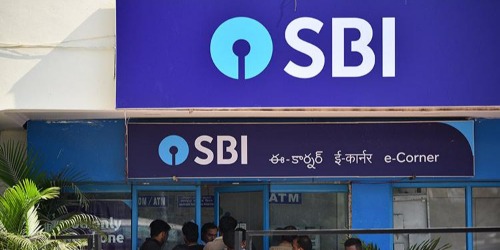
State Bank of India, the country's largest lender, has predicted that India's Gross Domestic Product (GDP) growth may slip to a record low of 4.2 per cent in the second quarter amid low automobile sales, deceleration in air traffic movements, flattening of core sector growth and declining investment in construction and infrastructure. India GDP growth has already hit a 6-year low of 5 per cent during June quarter of this fiscal (Q1FY20).
"Based on our composite leading indicator suggests GDP growth to slowdown further from 5 per cent in Q1 of FY20 to 4.2 per cent on account of low automobile sales, deceleration in air traffic movements, flattening of core sector growth and declining investment in construction and infrastructure," according to SBI Ecowrap report.
The SBI report said that 33 high frequency leading indicators revealed an acceleration rate which was 65 per cent in Q1FY19 declined sharply to 27 per cent in Q2FY20.
The lender has also cut GDP forecast for FY20 to 5 per cent from 6.1 per cent earlier, but expects growth rate to pick up pace in FY21 to 6.2 per cent.
"We however believe this growth rate in FY20 should be looked through the prism of synchronised global slowdown (countries have witnessed 22-716 basis point decline between June'18 and Jun'19, and India cannot be isolated). India is also significantly lower in Economic Uncertainty Index when compared globally," the report noted.
"The contemporary issue for macroeconomists is to focus on assuring adequate aggregate demand and the role of fiscal policy in this context is of paramount importance..In essence, markets are not unduly worried about fiscal deficit and await clarity from Government on the extent of fiscal slippage in current fiscal. Such an announcement could in fact be good for the markets," the report said.
Referring to recent change in Moody's outlook for India's sovereign rating (Baa2) to negative from stable, the report said that it will not have any significant impact "as rating actions are always a laggard indicator and the markets this time have categorically given a thumbs down to such".
On Friday, Moody's Investors Service had lowered India's credit rating outlook to negative, citing a prolonged slowdown in the economy.
Apart of SBI, many other agencies - Reserve Bank of India (RBI), the International Monetary Fund (IMF), the Asian Development Bank, World Bank, Organisation for Economic Co-operation and Development (OCED) - have forecasted decline in India's economic growth rates this fiscal.
The report came a day after industrial output fell for the second straight month in September to 4.3 per cent, lowest in the series that began April 2012, due to poor show across all sectors. The Index of Industrial Production (IIP) had declined by 1.1 per cent in August 2019, the government data showed on Monday.
On rate cut, the agency expects a larger rate cuts from Reserve Bank of India (RBI) in December policy, adding that it will not lead to any immediate material revival. "However such rate cut is unlikely to lead to any immediate material revival, rather it might result in potential financial instability as debt financed consumption against an increasing household leverage had not worked in countries and India cannot be an exception," it said.
"There is a perception in the market domain that de-risking the financial system has brought down the money multiplier in recent period, and that has purely to do with a slow growth in money supply in recent times," the report noted, adding that it is not entirely correct. The creation of money supply is largely endogenous in Indian context, catering purely to low money demand, it.
"Our research shows that the increase in digital transactions post 2016 also played a critical role in the decline in money multiplier, which has changed the composition of financial saving of households away from currency to some extent. In particular, there has been a substitution from currency and much of it has gravitated towards digital mode of payments," the report said.
Passenger vehicle sales rebound in October but two-wheeler, CV sales portray a grim economy
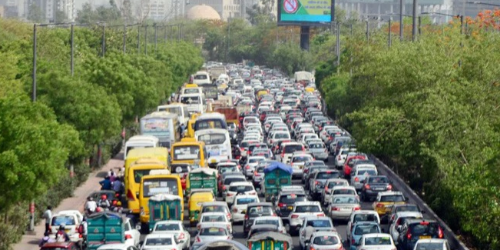
After 11 straight months of decline, sale of passenger vehicles in the domestic market rebounded to a marginal 0.28 per cent growth in October 2019, helped by the twin festivals of Navratri and Diwali falling in the same month. Commercial vehicles and two-wheelers however, stayed in the red registering a 23.3 per cent and 14.4 per cent decline, indicating that the overall economy was still grim.
Even in the passenger vehicle segment, the heavy lifting was done by utility vehicles that saw a 22 per cent increase in sales, thanks to a number of new products like the Kia Seltos, MG Hector, Hyundai Venue, Maruti XL6 and Mahindra XUV3OO bringing in incremental numbers. Sale of passenger cars was still down 6.3 per cent while the van segment registered a 35 per cent fall in sales during the month. Overall passenger vehicle sales stood at 285,027 units.
Aside from the wholesale figures that represent the vehicles dispatched by manufacturers from their factories to the dealerships, retail sales painted an even more optimistic picture. Retail sale of passenger vehicles sourced from government's VAHAN website showed a 13.9 per cent growth at 296,642 units. Retail sale of two-wheelers also grew by 8.9 per cent at 1,388,538 units.
"The industry really needs to switch to reporting to retail and not wholesale volumes. There are some strong signs of life in the market. And pipeline stocks have been slashed by controlling billings to dealers. Very appropriate stock levels now," Mahindra group Chairman Anand Mahindra had tweeted last Friday.
"From a like to like festive to festive season comparison over last year, we know that the industry has registered a positive growth in retail sales. New models and players like Kia and MG are adding to this positivity. We hope that it continues and November and December are also better than last year but just on the basis of one month we cannot say that we are out of the woods," says Rajan Wadhera, president, Society of Indian Automobile Manufacturers (SIAM).
Sale of heavy trucks and buses however presents a cause of concern. Even at the retail level the commercial vehicle segment that is considered to be a barometer of the overall economy, registered a similar 23.5 per cent decline in sales. Wadhera said unlike in passenger vehicles and two-wheelers, it cannot be attributed to only inventory correction anymore.
"It is not that the industry is sitting on big stocks anymore and an inventory correction is underway. This is now truly based on demand," he says. "Demand for good is prerequisite to sale of CVs and it represents what is happening in the economy at large. When not enough goods are there to be hauled around, sales will suffer and that is what the figures indicate."
"It shadows the economy. The change in axle loading norms (last year), better quality of roads and faster movement of goods has together created a additional capacity generation of 30-35 per cent. So there are more trucks and not as much goods for them. Unless growth comes to that order, we will not see a turnaround in that segment," Wadhera adds.
The unseasonal rains that have delayed the crop cycle in the country is blamed for the lacklustre two-wheeler sales.
"Once the money starts reaching the farmers in November, we should see an uptick in sales," he says.
PMC Bank scam: Maharashtra Sikhs unable to go on Kartarpur pilgrimage due to fund crunch
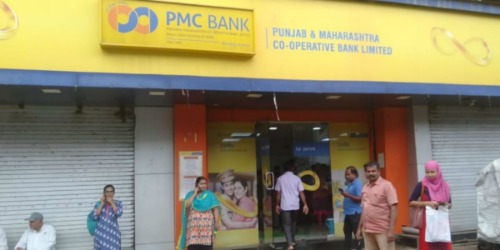
At least 1,950 Sikhs from Maharashtra could not go to Gurudwara Darbar Sahib in Pakistan after opening of the Kartarpur corridor as they are facing financial crunch due to a scam at the Punjab and Maharashtra Cooperative (PMC) Bank, a senior community leader claimed.
Prime Minister Narendra Modi on Saturday inaugurated the Kartarpur corridor and flagged off the first batch of over 500 Indian pilgrims, including former prime minister Manmohan Singh and Union minister Harsimrat Kaur Badal.
The corridor links Gurdwara Darbar Sahib in Pakistan, the final resting place of Sikhism founder Guru Nanak Dev, to Dera Baba Nanak shrine in Punjab's Gurdaspur district.
The PMC Bank has been put under restrictions by the RBI since September after an alleged Rs 4,355 crore scam came to light, following which the deposit withdrawal was initially capped at Rs 1,000, causing panic and distress among depositors. The withdrawal limit has been raised in a staggered manner to Rs 50,000.
Nearly 2,000 Sikhs from Mumbai, Nashik, Nanded, Navi Mumbai and Thane, most of whom have accounts in the PMC Bank, wanted to go on to the Gurdwara Darbar Sahib as part of the trip organised by local body Nirmaan Sevak Jattha, Hardev Singh Saini, member of a gurudwara committee in Kurla, said.
"We were in the process of submitting their details online on the required website, but suddenly due to the PMC Bank crisis many opted out. Of these 2,000 people, only about 50 could finally manage to go. All others dropped out due to lack of money because of the PMC Bank scam," he claimed.
Ravindra Kaur Saini, who has three accounts in the PMC Bank, said she was disappointed at not being able to be a part of the historic pilgrimage.
"We were waiting for this historic moment for last many years, but unfortunately we did not get a chance to go due to the PMC crisis. I have three accounts in the PMC Bank, but did not have money in hand to go," she said.
Another member of the Kurla gurudwara committee, Preetpal Singh Seth, said several people with accounts in the PMC Bank could not help each other to make the pilgrimage as all of them are currently cash-strapped.
"I also lost this golden opportunity to go on the pilgrimage. Around 80 per cent account holders in the PMC Bank are Sikhs. Most of the people come forward to help each other during such times, but this time they are facing the cash crunch," he said.
The depositors have so far held over two dozen protests since the bank was put under directions by the RBI, and have agitated outside the RBI's headquarters and also the official residence of Maharashtra's chief minister.
They also targeted political campaign venues ahead of the elections to the state, which resulted in them getting an audience with Finance Minister Nirmala Sitharaman as well.
The crisis at the bank is attributed to loans made to realty player Housing Development Infrastructure Ltd (HDIL), which were allegedly hidden from regulators' scrutiny, turning non-performing assets.
Five persons, including HDIL promoters and bank's top management, have been arrested.


